In all my years of being a car journalist, I have never actually tested or owned a Toyota Fortuner. Recently, I felt that after close to nine years of writing, it was about time I change that fact.
The Fortuner is an immensely significant car in the Philippines. In fact, I clearly remember the chaos of the first model’s launch—how the wait lists were so long, it wasn’t until 10 months later that you could get a chance to buy the country’s first relatively affordable midsize SUV. This left a sour taste in my mouth as unscrupulous dealers would not even put you on the list unless you financed the car and bought in-house insurance. Don’t even get me started on the hocking of accessories to further drive up the cash flow.
What followed was an avalanche of competitors from manufacturers who wanted a piece of that lucrative pie. Against models like the Mitsubishi Montero Sport, the Isuzu Alterra (and, later, the MU-X), the Nissan Terra, and the Chevrolet Trailblazer, it seemed that Toyota Motor Philippines (TMP) had a fight on its hands.
Fast-forward to today, and the affordable midsize-SUV class is still one of the most hotly contested and cutthroat segments in the market. In an environment like this, the Fortuner still reigns supreme, but can this TRD offering help it retain the crown? Or should the king bow down to the hopefuls jostling for the throne?
Styling
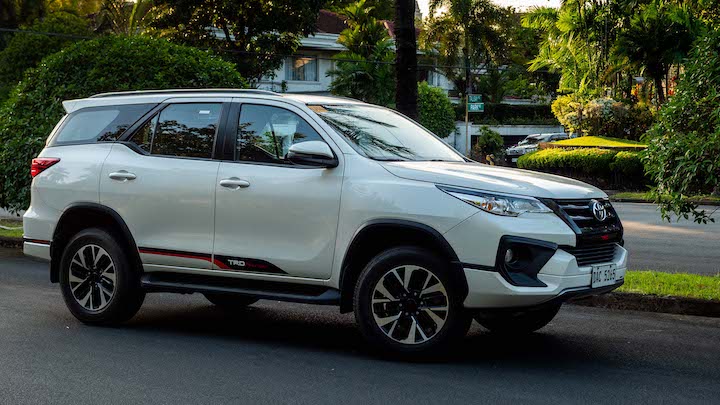
The Fortuner has always been a relatively stylish midsize SUV. It has a macho presence, and its flowing lines make it seem like it sits a class higher than the competition at the same price point. We particularly like how the body line kicks up from the C-pillar to the rear, giving the vehicle a wide fender stance.
To spice up the range, Toyota has introduced the TRD Sportivo variant, equipping the Fortuner with a sporty TRD bodykit, 18-inch wheels, and various decals. We generally find it an improvement over the stock trim, especially in White Pearl—the black bits and trim provide great contrast to the color of the car.
That said, you wouldn’t call this the best-looking SUV. In fact, some would say its looks are a bit...typical. What you must to realize, however, is that it is only typical because there are so many plying our roads. Taken in isolation, the Fortuner is a handsome vehicle befitting of its status as the best-selling SUV in the Philippines.
Interior
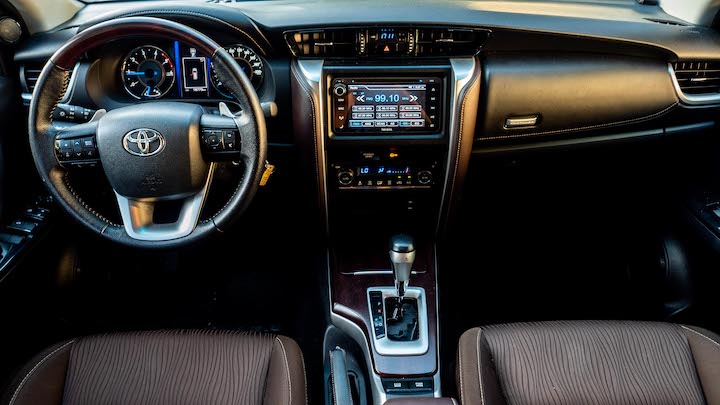
The layout of the cabin is...well, nicely laid out. The seats are covered in high-quality fabric with accentuating patterns, and soft-touch materials abound all over the touch points for the driver, including a knee cushion and padded armrests on either side. The seating position is good, giving the driver the commanding view that is sought after by buyers of SUVs.
Unfortunately, the same can’t be said of the steering wheel. It’s made of a resin-like material that seems a bit off. This shortcoming is further accentuated by some huge stitching used on the thumb hooks—stitching that tends to dig into your skin as you drive.
Thankfully, while I disagree with the choice of chrome accent on the gauges (they seem a bit tacky), the 4.2-inch color TFT multi-information display within the instrument panel is straight out of a Lexus. My family has owned a Lexus NX, and the screen from that luxury car has found its way into this decidedly non-luxury car—an example of the trickle-down effect done right.
Engine performance
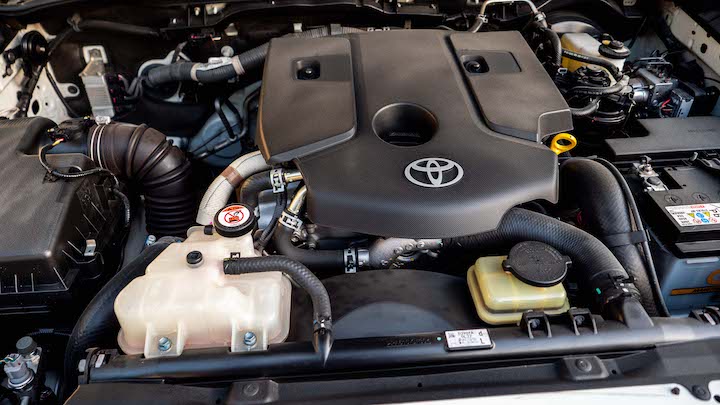
Here’s where the Fortuner falls a bit flat in 2020: The 2.4-liter four-cylinder turbodiesel engine has 147hp and 400Nm of torque, and is mated to a six-speed automatic transmission. Paddle shifters allow for a semblance of flexibility, but we doubt you will actually ever use them, as the engine is just decent at best.
It’s not a bad engine, mind you. Frankly, it lacks the clatter of older diesels, and on acceleration, it exhibits a somewhat gruff exhaust note. But it’s just a bit basic. It does a fine-enough job of getting the Fortuner—which is not a light car—up to highway speeds, but we wish the engine exhibited a bit more character. It’s unfortunate that to get the best powerplant the range has to offer, you would have to pay an arm and a leg to get the much more powerful 2.8-liter variant.
Likewise, the drivetrain of the Fortuner is good, but it could use a bit more uniqueness to differentiate it from its competitors.
Ride and handling
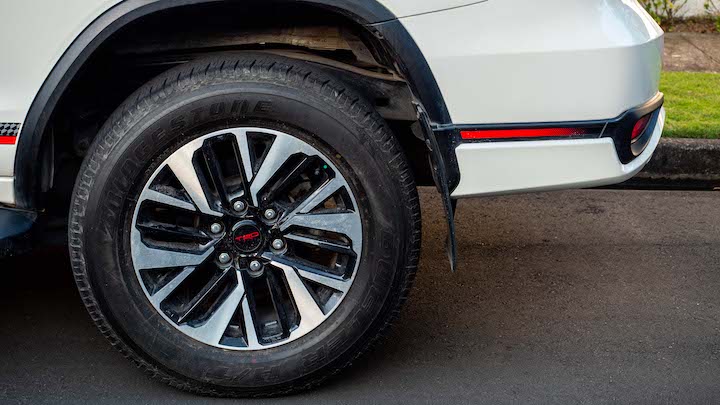
The Fortuner has had a rough history (pun intended) in terms of ride and quality. A common complaint with the first generation was the bouncy ride that tended to make passengers feel queasy. Since the good old days, however, Toyota has embraced the spirit of kaizen (continuous improvement), and over the years, small but numerous changes have resulted in huge improvements to the Fortuner’s ride. In this aspect, there’s a night-and-day difference between this iteration and the Fortuners of yore. The ride is smooth yet controlled, and the excessive rebound in older versions has been ironed out to the point of being somewhat plush.
Is it perfect? Definitely not. This is still a ladder-on-frame truck with an emphasis on ‘truck.’ It will always be bouncier than most unibody chassis vehicles. If, however, you’re used to the ride of SUVs, or even of older Fortuners, the changes over the years have made this Toyota more livable on the road compared with previous iterations. Potholes are dealt with easily, but bigger undulations or bumps tend to rock the cabin in an unpleasant way typical for SUVs of this size. Such is the price of the durability and flexibility of a ladder-on-frame design.
Extra features
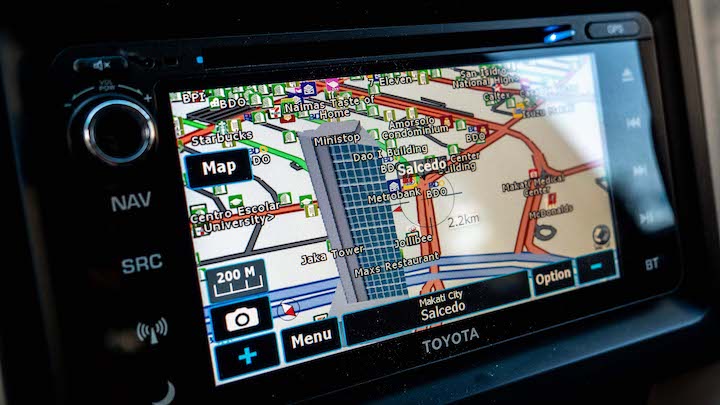
This is where the entry-level nature of this variant rears its ugly head. We counted 11 blank buttons around the transmission lever and to the left of the steering wheel. There has to be a better way of not reminding owners that some functions have been removed. All those blank pieces of plastic remind that there are other Fortuners on the road with more capabilities than yours.
Also, there is no disguising the fact that the SUV has a terrible infotainment system. In 2020, where cars costing half as much as this have seamless smartphone integration, the Fortuner’s touchscreen head unit feels at least a decade old. It’s dated, slow and cluttered, and looks like a cheap aftermarket head unit peddled along Banawe. The system took a whole 20 minutes and multiple restarts just to pair with my phone via Bluetooth, which would not have happened if my unit had Apple CarPlay or Android Auto.
Thankfully, TMP has assured us that from September 2019 onward, all newly sold Fortuners are equipped with Apple CarPlay and Android Auto as standard. Additionally, while this specific unit did not have a reversing camera, TMP has likewise noted that the same variant now has the feature as standard. Still, it remains a step behind competitors who have embraced features like 360-degree cameras and much more advanced and intuitive infotainment systems.
Verdict
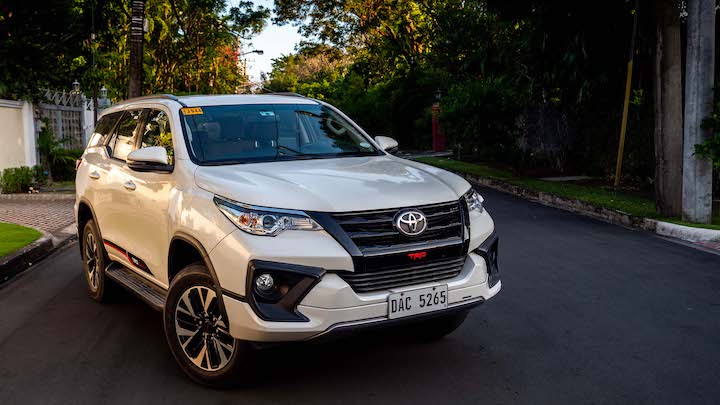
The 2019 Toyota Fortuner is exactly that—the 2019 iteration of an established formula. While it would be easy to criticize the SUV for some of its shortcomings, the fact is it’s still one of the best-selling SUVs in the country today. In terms of sheer volume, it outsells everything else on the market, but just because everyone is buying one doesn’t mean there is no room for improvement.
The current infotainment system is dated, and the lack of features in this variant leaves you wanting. At the end of the day, though, the Fortuner is still an extremely competent SUV in a segment flooded by pretenders to the throne. It rides well, has an imposing road presence, and boasts a resale value that obliterates the competition.
On resale value, practicality, and popularity alone, the Fortuner wins by default, but for the first time in years, it wins by mere meters and not by a mile.
SPECS: 2019 Toyota Fortuner 2.4 TRD 4x2 AT
Price: P 1,846,000 (White Pearl)
Engine: 2.4-liter turbodiesel I4
Transmission: 6-speed automatic
Power: 147hp @3,400rpm
Torque: 400Nm @1,500-2,000rpm
Drive layout: RWD
Seating: 7
Score: 16/20
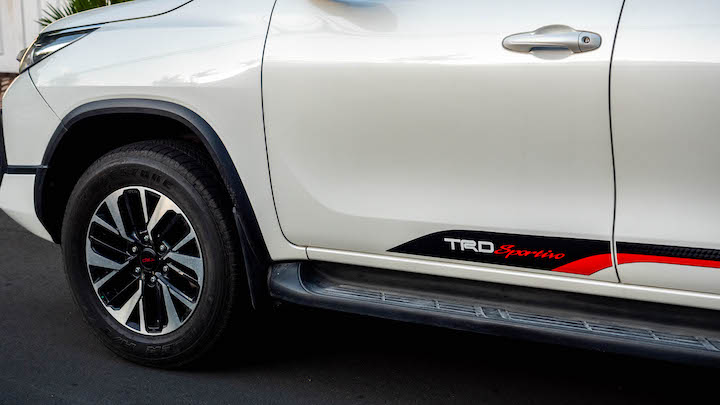

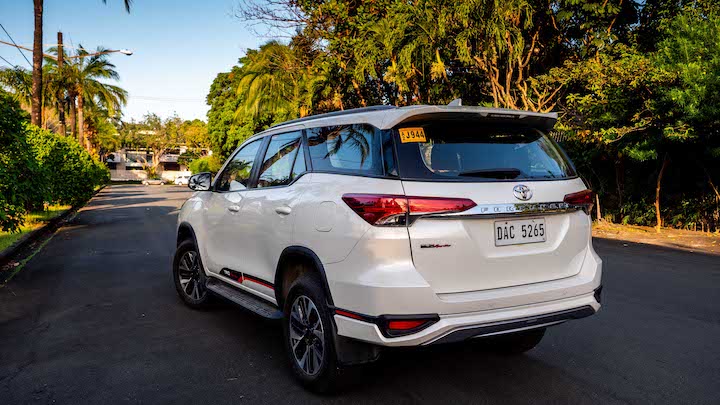
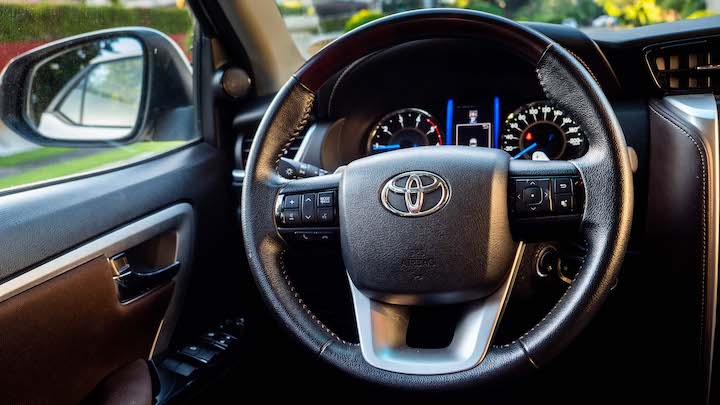
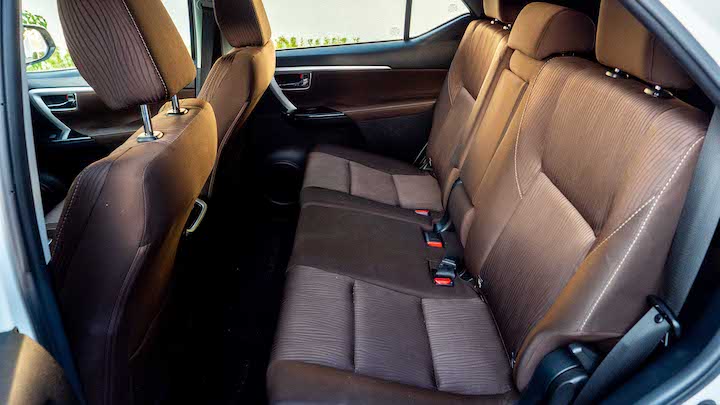
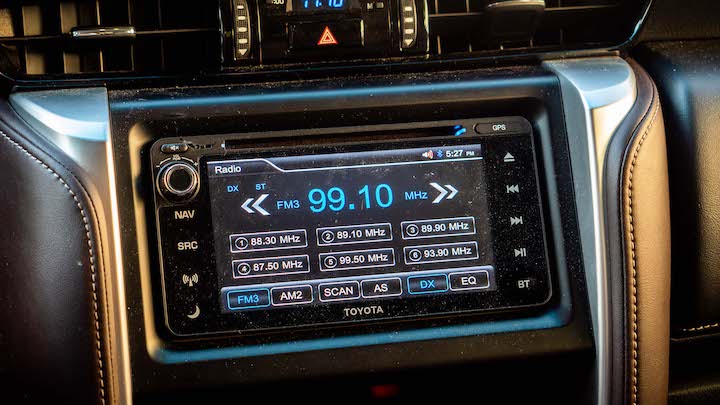
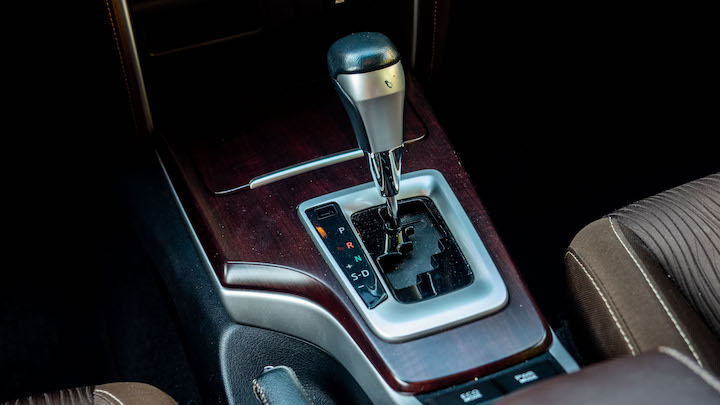
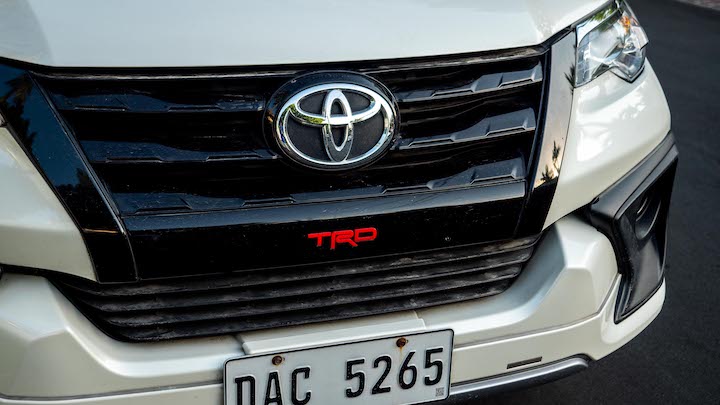

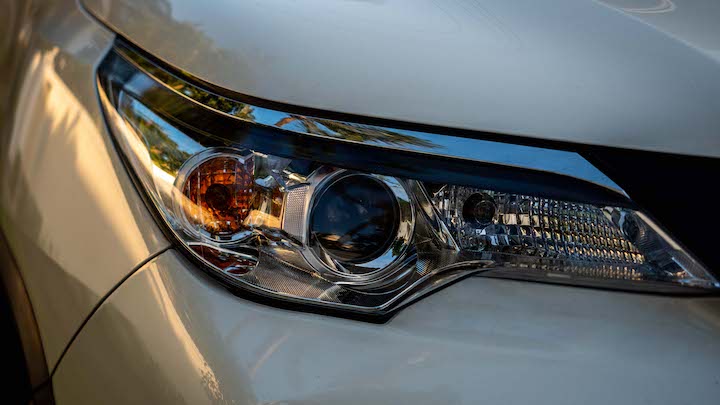
[ArticleReco:{"articles":["35649","35399","33184","31930"], "widget":"See Also"}]
Source: Top Gear

No comments:
Post a Comment